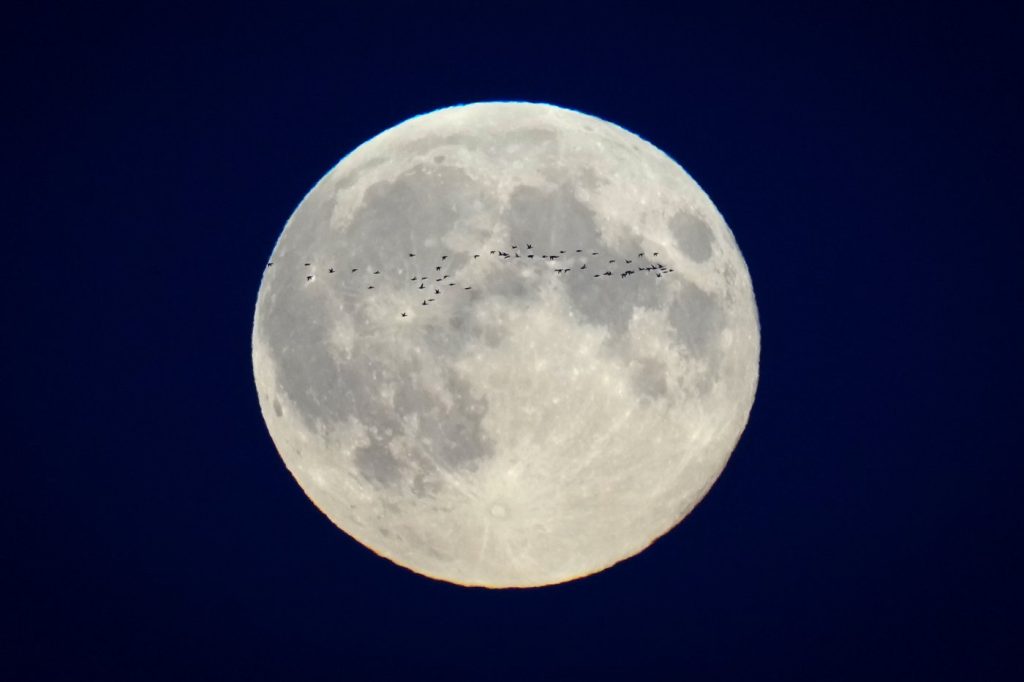CAPE CANAVERAL, Fla. (AP) – Landing a spacecraft on the moon has historically been a mix of successes and failures. In 2022, a spacecraft developed by Intuitive Machines under a NASA-sponsored initiative managed to land on the moon, marking the United States' return to lunar landings after the Apollo program. Unfortunately, the lander tipped on its side after landing and only operated for a short time.
On Sunday, another U.S. company, Firefly Aerospace, achieved a notable milestone by successfully landing its lunar lander, becoming the first private entity to execute a fully successful moon landing. Both companies are involved in NASA's efforts to facilitate commercial deliveries to the moon in preparation for future astronaut missions expected later this decade.
The moon's surface is strewn with remnants of unsuccessful landing attempts from various missions over the years. Below is a summary of the key successes and failures in lunar exploration.
Historical Successes
The quest for successful lunar landings began with the Soviet Union's Luna 9, which achieved its goal in 1966, representing the first successful soft landing on the moon after earlier attempts had either crashed or failed entirely. Just four months later, in 1966, the U.S. followed suit with Surveyor 1, fueling the competitive spirit between the two nations as they raced to land human beings on the lunar surface.
NASA solidified its lead in the space race with the iconic moon landing of Apollo 11 in 1969, which saw astronauts Neil Armstrong and Buzz Aldrin walk on the moon. Over the course of six missions, twelve astronauts explored the lunar surface before the Apollo program concluded with Apollo 17 in 1972. Despite achievements, the U.S. remains the only country to have sent humans to the moon and aims to send more crews back by the end of 2026, a year after a planned lunar fly-by of astronauts.
China's Emergence
In 2013, China became the third country to successfully land on the moon, deploying the Yutu rover, known as 'jade rabbit' in Chinese. China advanced its lunar exploration with the Yutu-2 rover landing on the unexplored far side in 2019, marking a significant achievement. In 2020, a sample return mission yielded nearly 4 pounds (1.7 kilograms) of lunar materials. China also plans to deliver samples from the far side in 2024 and is seen as NASA's primary competitor, with aspirations to have its astronauts on the moon by 2030.
Russia's Setbacks
In 2023, after nearly half a century of absence, Russia attempted to land the Luna 25 spacecraft on the moon, but it tragically crashed. The last successful Russian lunar mission occurred with Luna 24 in the 1970s, which not only landed but also returned moon rocks to Earth.
India’s Resilience
India faced a setback in 2019 when its first lander failed to achieve a lunar landing. However, in 2023, India launched Chandrayaan-3 (meaning 'moon craft'), which successfully landed on the moon, making India the fourth country to accomplish this feat. This success occurred just days after the failure of Russia's Luna 25 mission.
Japan's Attempt
In January 2024, Japan became the fifth country to land successfully on the moon with its lander, despite touching down in a less than ideal location, which hindered its ability to generate solar power. The spacecraft managed to send back images and data before silencing when the long lunar night commenced.
Private Sector Challenges
Israel’s privately funded lander Beresheet, which translates to 'in the beginning,' crashed into the moon in 2019. In 2023, another private effort by the Japanese company ispace also encountered failure when its lunar lander met a similar fate. Contrasting the failures, Intuitive Machines became the first private organization to achieve a safe landing, although its naval lander tipped over and operated briefly with limited communication capabilities. Another U.S. company, Astrobotic Technology, attempted a moon landing in the same year but had to abandon the mission due to a fuel leak, leading to their eventual re-entry and destruction over the Pacific Ocean.
The successful landing of Firefly Aerospace's Blue Ghost has sparked renewed interest in commercial lunar operations, with companies such as Intuitive Machines and ispace planning additional lunar deliveries in the future.










